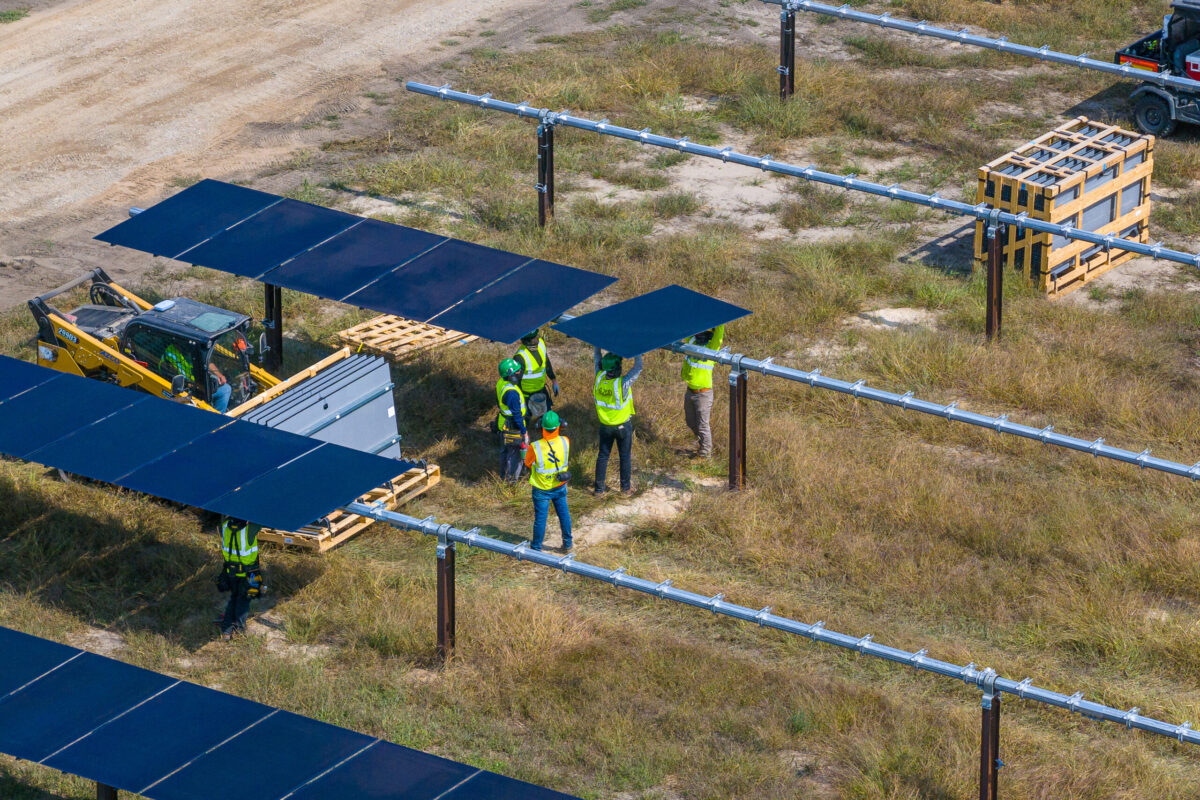High-voltage power lines are ugly, and the U.S. needs more — Transmission capacity is the key to solar and wind power generation. An economics writer notes that China has developed 80 times more transmission capacity in the past decade than the U.S. High-voltage transmission lines are needed to bring electricity from renewable energy installations to the towns and cities where it’s consumed. The U.S. is way behind other countries in building these lines. Fact: Since 2014, China has built 260 GW of interregional transmission capacity that’s come on line or will come on line in the next few years, according to a report this month by Americans for a Clean Energy Grid. Europe is way behind at 44 GW, followed by South America at 22 GW and India at 12 GW. Then comes North America at 7 GW, with only 3 GW in the U.S. Source: Bloomberg
Ohio bill would ban new large solar and wind projects for up to three years: The bill’s sponsors voted last year to gut state clean energy standards while subsidizing nuclear and coal bailouts. An Ohio bill introduced last month would halt most large solar or wind energy development for up to three years — an echo of previous policies that stunted the state’s renewable growth for much of the last decade. The legislation does not appear to have broad support, but it is concerning to critics nonetheless because it reflects some lawmakers’ ongoing hostility to renewable energy, despite its growing economic importance. “It’s a relentless attack on the inevitability of where the energy market is today and where it’s going,” said Rep. Casey Weinstein, D-Hudson, who opposes the bill. “It’s a bury-our-heads-in-the-sand mentality that is just so, so locked in with the status quo, while the rest of the world and country are moving on.” Source: Energy News Network
Solar-plus-storage poised to become more financially attractive: A mix of renewable energy and gas generation remains the most cost-effective option in most regions of the U.S, but a new report from BloombergNEF (BNEF) suggests solar-plus-storage could soon be the more financially attractive option. Solar-plus-storage has already begun to compete with open cycle gas turbines, and in some areas such as California combined-cycle gas generators are struggling to maintain their status as the lowest-cost generation asset. Regions with access to cheap natural gas may see slower transitions, according to the report. Renewable energy and battery storage could one day represent 70-80% of generation in most markets, but for 100% renewable energy, a new solution for seasonal energy storage will need to become cost competitive, according to Yiyi Zhou, a clean energy specialist at BNEF. Source: Utility Dive
This content is protected by copyright and may not be reused. If you want to cooperate with us and would like to reuse some of our content, please contact: editors@pv-magazine.com.







Is there a reason power lines do not run underground? The fires supposedly started by them in Ca. show that this might be a better way?
Cost.
Transmission great increases the centralization of the grid to a few, very large generators which makes us all more vulnerable to both physical and cyber attacks. Only by decentralization into microgrids and minigrids will we be able to attain any level of security against the many threats we face.